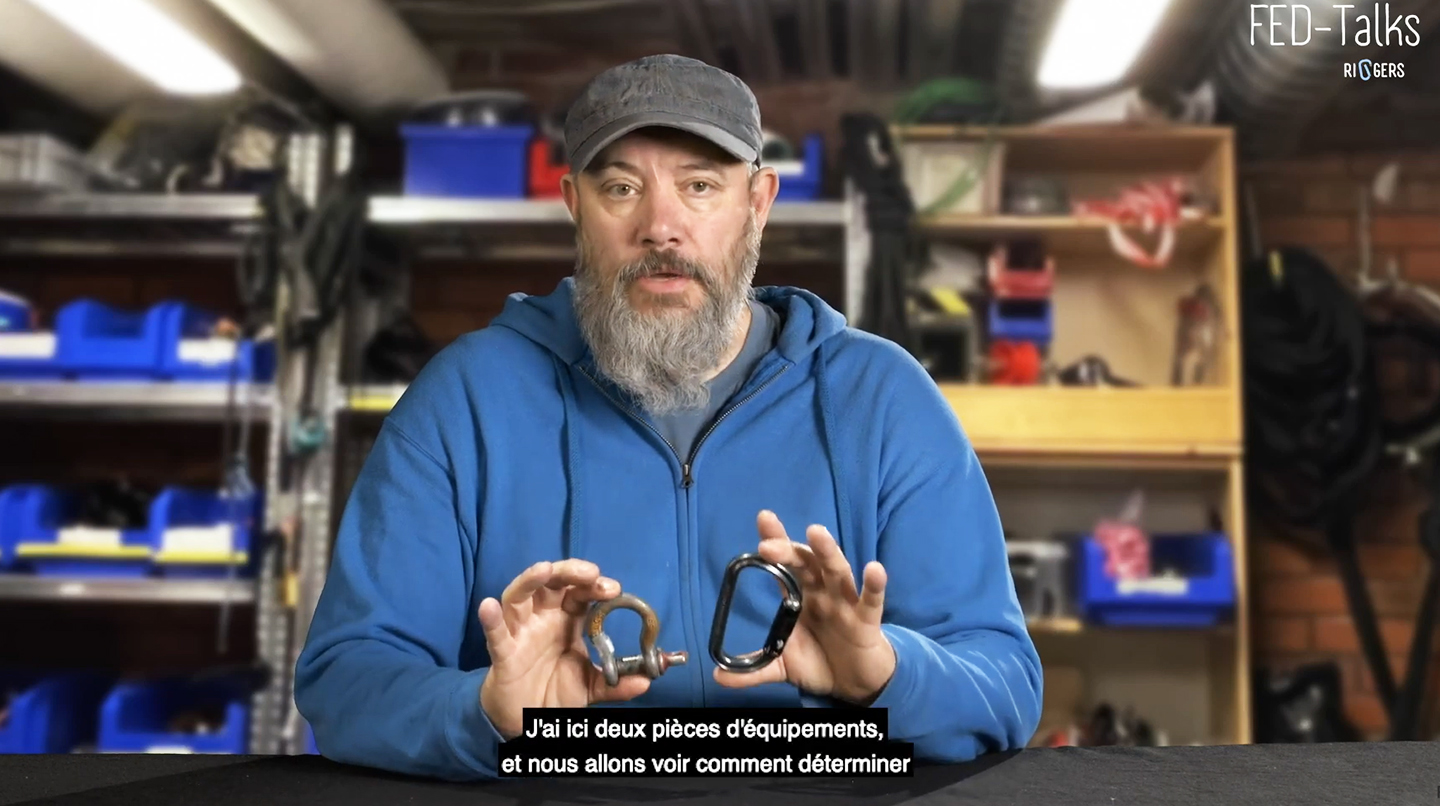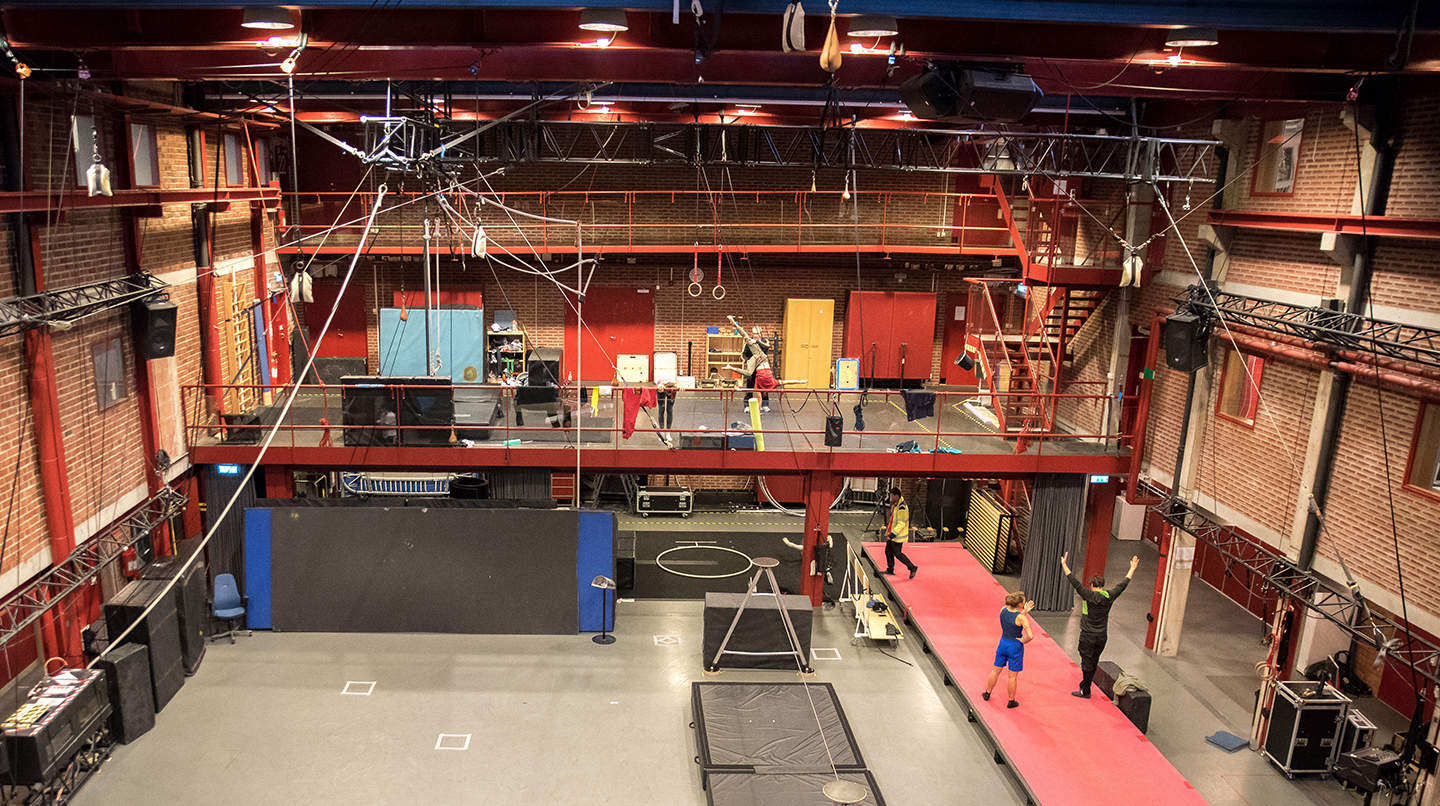Safer circus education thanks to international collaboration
With the help of EU funding, riggers from nine circus education institutions in eight countries have met for the first time to exchange experiences, learn from each other's working practices and discuss common challenges.
Topics have ranged from the stress of often working alone with great responsibility for student safety, to technical solutions for circus equipment which often consists of combinations of parts from, for example, sailing, climbing and industry.
The European network for professional circus educations, FEDEC, has been an important partner for SKH and supported us in coordinating the project.
– The collaboration with FEDEC has provided many contacts and synergies during the project period, says Jorun Kugelberg, international coordinator at SKH. Now that the project has ended, FEDEC will host the project results on their website, making our material available to all their 83 members in 34 countries and for the future!
Outcomes of RIGGERS
1. Eleven video tutorials
The circus riggers involved in the project have created eleven informative and inspiring short videos for anyone who wants to know more about what a circus rigger does, use the films as teaching material or find inspiration.
2. An international riggers community
In a way, the most important outcome of the project is the vibrant network of riggers and higher circus education institutions that have been formed. The experienced and incredibly knowledgeable people who have been working separately, now support each other in both technical and organizational issues. The conversations will continue on the digital platform Slack, where there is also a public channel for those who want to ask questions or get in touch with the community.
3. Survey and evaluation
The situation for riggers in circus education has been surveyed for the first time. The results of the survey show, among other things, that riggers feel that they work in isolation and with great responsibility, that the paths to the rigging profession are many and varied, and that the skills are largely based on lived experience in the profession.
Saar Rombout, a circus artist, rigger, teacher and SKH alumni, has followed the project and written a comprehensive evaluation. She notes that during the project, the riggers have moved from cautious protectionism to open and supportive dialogue. She stresses the importance of supporting the group in maintaining contact to develop their shared skills and spread them further. The evaluation also includes a first draft of a professional profile for a rigger in circus education.
– The collective expertise within the community created through this project is unique, states Jorun Kugelberg. We now aim to further this formation and let it be the basis for making circus rigging its own burgeoning subject area in higher education.
Videos, virtual platform Slack, survey and evaluation on the project website.

Still from the RIGGERS tutorial "Equipment markings – Working Load Limit and Minimum Breaking Strength" featuring Will Cleary, a rigger at SKH Circus. Film photography, sound, lighting and editing by Roland Engström, Torulf Holmström and Christoffer Limér.
William Cleary, circus rigger at SKH
William about the RIGGERS project
The ability to connect with other circus riggers and colleagues around the world is very important to me, especially those who work in professional circus schools. In the course of this project, I visited quite a few other schools and had a lot of colleagues visit us at SKH - this was something new, something unique and amazing.
The experience and the discussions we had in the RIGGERS project are now shaping how we develop our rigging work at the circus programme at SKH. I think this will lead to better and safer rigging practices at SKH all over and also have a positive effect on safety policies and guidelines at SKH generally - especially when moving into a new building. Thanks to the RIGGERS project we got an engineer on board the building project, who specialises in circus buildings – and even better – in circus schools.
And we are very much still actively discussing safety through the app Slack and a specific social messaging group linked to the project. Since the project ended, we have discussed incidents, and equipment failure and shared good and bad practices.

SKH Circus Hall Photo: Bengt Söderström/SKH
William about his job as a circus rigger at SKH
A circus rigger is a highly skilled professional specialist who takes care of the safe setup, maintenance, and use of the equipment needed for circus performances and training. A circus rigger sets up and checks everything, from basic ropes to complex aerial equipment, to ensure it is safe to use. We inspect the equipment for any damage, make sure everything is correct and sometimes perform tests to check for safety.
Part of my job as a circus rigger at SKH, involves delegating to students and teachers by letting them conduct pre-use checks before equipment is used and reporting any problems. This facilitates the class and individual training when the rigger is not present.
Another important part of a rigger's job is identifying potential dangers and creating systems to keep those risks low. We assess the safety of different acts and ensure all necessary safety measures are in place. The difference between safe and unsafe can be a very small or subtle detail. Making sure the students/artists are safe requires a high level of competence, a keen eye and often a lot of planning and background research.
Riggers at SKH work closely with teachers and students to develop new ideas and assess the safety of new equipment. We train students, teaching them the skills needed to handle rigging safely so they can work independently. We need to understand what each class, performance or situation requires and we work and navigate how these fit with all schedules and spaces.
Besides technical skills, riggers often guide the creative process and may also be artists themselves. A rigger is sometimes involved in researching and developing new equipment and circus techniques. Riggers must have a good understanding of how things like physics and mechanics work, and we need to know how different materials behave when put under stress.
A circus rigger does more than just set up equipment. We are a vital part of the circus team, ensuring every performance and training session is exciting and safe. The riggers' knowledge and careful attention to detail are crucial for the smooth running of any circus school, allowing the show to go on, safely.
But all of what I have mentioned above doesn’t reflect the fact that as a circus rigger, I work in a field with a certain amount of risk albeit considered risk and with it stress. There isn’t a manual for what we do, no best practice to follow or off-the-shelf solutions. We are the specialists and we have a big responsibility in our organisation. An accident on a high level could be a major incident and a serious accident with the rigging would certainly be hard for me to deal with emotionally.
I believe that the fact that we have not had anything like that at SKH is a testament not just to the riggers but also to the students, the teachers, the managers at the circus education and of course - the equipment.
We are quite isolated in terms of rigging - in Sweden, there are only between four and seven riggers working specifically with circus. It's not a job that exists here, there are few places where it does, maybe Canada or France. - most Swedish riggers work internationally and so, they come and go.
/William Cleary, circus rigger at SKH